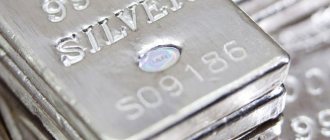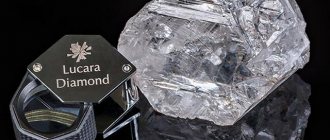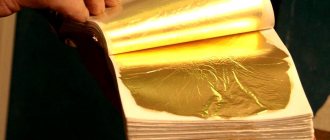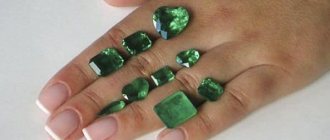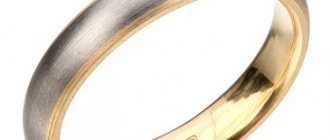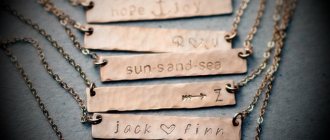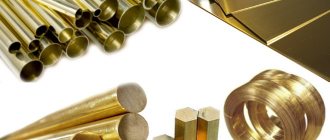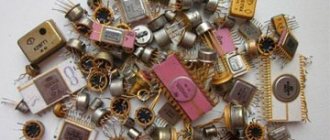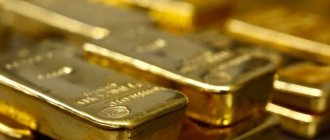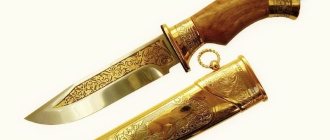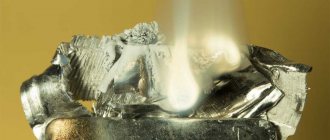Copper alloys have been known since ancient times and are still widespread today. With the exception of compositions including zinc or nickel, all other types are classified as bronze. There is a very impressive number of them, they have very different properties, so the scope of their application is huge. And this article will tell you about the use of bronze in mechanical engineering (automotive), industry, construction, everyday life and other areas.
Types of bronze
The main component of bronze is copper, to which other metals (usually tin) are added. At the same time, the share of other substances is no more than 2.5%, which makes it possible to improve the performance of the resulting alloy. If copper is combined with zinc, brass is obtained; when zinc is replaced with nickel, a cupronickel composition is obtained. There are other options. For example, BrA5 is a type of bronze obtained by adding aluminum. We work with the BrO5 brand, made on the basis of tin, since this material fully complies with state requirements.
Casting molds
There are two types of casting molds: disposable and reusable. It all depends on the material from which they are made. If a clay-sand mixture is used for manufacturing, then to maintain its shape, metal flasks are required to prevent the destruction of the mixture.
Reusable molds are made of steel with a horizontal or vertical parting line. To increase the casting ability of a copper alloy, lubricants are used to prevent the occurrence of welds, burns and other defects.
A little about history
The first bronze products appeared in the 3rd century BC. The Middle East is considered the birthplace of this amazing metal - the oldest finds of a compound of copper and tin were found in Iran, as well as Syria, Turkey and Iraq. Most often, household and work items were made from bronze. The most common surviving items are household, military and jewelry items.
Then came a period when this metal became the main source of the monetary industry - coins of various denominations were made from it. Around the 5th century AD. The production of bronze sculptures began in Hellas. This is where the tradition of making bronze miniatures and figurines originates, which is still relevant today.
With the onset of the Middle Ages, bronze became part of weapons and became the main resource for casting cannons, cannonballs, and shells. Bell casters also paid attention to this metal - bronze makes beautiful products that give a deep and pleasant sound.
Bronze spear tip (7th-4th century BC).
From strings to bearings
The formula for success of bronze is a combination of rare qualities of the “union of metals”.
Therefore, its use has only increased since the end of the Bronze Age.
The trumpeter plays the anthem...
The music would not be so beautiful and expressive if it were not for the amazing melodious fusion. At first, the properties of bronze were appreciated by priests. In the Middle Ages, the church demanded more and more “bell bronze”. Asian clergymen made full use of the sonorous voice of bronze: they made bells, “singing bowls”, gamelans, and gongs from it.
Nowadays bronze sings with the strings of pianos, double basses, harpsichords, banjos, and guitars.
Phosphor bronze saxophones have a unique voice.
For industry
It is clear that the industry did not fail to snatch its piece of the bronze pie.
- Mechanical engineering (bearings, shut-off valves, bushings, friction units of fittings); rolled metal (sheets, pipes, rods).
- Bronze wire - for wires, cables, welding electrodes.
- Aviation and shipbuilding, rocketry and the simplest bearing shells - our alloys are in demand everywhere.
- In the jewelry industry, aluminum bronze with its golden color is used to make cheap costume jewelry. Bronze alloys were often used for coinage, especially in ancient times.
Bronze products
How do the species differ?
Alloys are classified depending on the selected components. Bronze made with the addition of tin often also contains lead or phosphorus - this provides an alloying effect. Due to tin, the alloy becomes harder and more durable, withstands melting better and retains its shape well. The resulting material is easy to grind, and the presence of special components allows you to achieve higher performance and visual performance.
There is also bronze, which does not contain tin. Such options have a new structure that differs from the traditional one, but in terms of their properties they are almost equal to the classic alloy.
The technical properties of a metal can affect its performance.
Casting material is formed by the method of making decorative and stylish products (for example, our products). It is also widely used in the production of bearings, parts of complex mechanisms, as well as components for devices designed to operate in sea water.
Deformable materials are designed to be formed mechanically. In this case, the metal is cut, forged, and covered with corrugation. As a rule, this option is flexible and relatively soft - cables, tapes, rods and sheet products are produced from it.
Bronze rod.
Foundry models
Artistic casting of bronze and brass involves obtaining the smoothest possible surface, so fairly hard materials are used to recreate the model:
- wood;
- gypsum;
- Ivory.
To obtain the smoothest possible surface, it is subjected to elimination of porosity by puttying, priming and varnishing. Casting models are made split; one-piece - suitable for casting products of simple shapes; special for parts with a rather complex configuration.
Properties of bronze
When considering this alloy in comparison with other metal mixtures (for example, zinc composition), it is worth noting that real bronze is impervious to natural processes of destruction, lasts a long time and is resistant to aggressive influences (vibration, friction). It also remains durable and beautiful even with prolonged contact with water, air, acidic environments or salt solutions. Most types of bronze can be soldered or welded.
The color of the alloy depends on the components included in its composition. The lightest type is white. Dark classes have a reddish tint.
The following additives affect the tone and quality of bronze:
- zinc and lead reduce susceptibility to friction;
- aluminum and silicon extend service life, protect against corrosion and deformation;
- nickel and iron increase the ability of the alloy to recrystallize, making the substance smooth and homogeneous;
- silicon or manganese is added to increase resistance to rust, oxide deposits and intense heat;
- a material not intended to conduct electricity is made with the addition of chromium or beryllium.
The most popular classes of bronze alloy used in industry are:
- Beryllium (due to hardness). Can be hardened and is elastic. With the natural or artificial aging of a metal, its increased resistance to mechanical processes is manifested. This indicator is often enhanced by preliminary deformation. Serves for the manufacture of large and small machine parts, as well as for the production of equipment.
- Aluminum (due to high density). It is resistant to chemicals, does not change under the influence of natural factors, and is suitable for use in sea water. Easy to process and cut, popular in the production of flat and strip products.
- Silicon-zinc (advantage: excellent fluidity). Does not create sparks during machining (turning, milling). Suitable for casting complex or decorative shapes.
- Lead – resistant to friction and shock. Due to these indicators, it is more often used for parts that carry a large load.
- Tin - combines all the above advantages, and therefore is in greatest demand.
Structure and composition
- The properties of the alloy - from color to fluidity in molten form - depend on two main factors: the qualitative composition of bronze and its structure. A qualitative composition is a set of metals or non-metals involved in creating an alloy in a tangible, significant amount. Moreover, the latter is determined not by the actual mass or volume of the substance, but by the severity of the properties that it creates. The addition of only 0.25% silver significantly increases electrical conductivity, and to obtain anti-friction properties you need to add at least 4% silicon.
The composition is indicated on the labeling, which allows you to choose the right material for certain jobs.
- The second factor is less known - the structure of the alloy or solid solution . The fact is that only 15.8% of tin can dissolve in copper, while in the alloy there can be noticeably more of it. This causes the appearance of alloys with different phase structures. Single-phase - the proportion of tin does not exceed 6–8%; there is only one α-phase. This composition is characterized by elasticity and high malleability. Moreover, bronze with a tin content of up to 2% can be forged in the cold without heating, and with a metal content of up to 8% - with heating.
- Two-phase - when the tin fraction exceeds 15%, that is, the maximum solubility, 2 phases appear in the solid solution. At the same time, such a quality as malleability completely disappears, and the alloy begins to gain hardness and some fragility. This alloy is used for casting.
Additional elements that influence the properties have little effect on the phase composition.
How to get bronze
Bronze making is a demanding and rather difficult process in which auxiliary metals are introduced into molten copper. Smelting is carried out in forges or induction furnaces. For heating, natural fuel (coal) or flux is used.
The first stage is placing copper in the furnace and heating it until it reaches a liquid state. After this, phosphorous copper is introduced into the substance, to which alloying components are later added. The resulting alloy is mixed, and a new processing temperature is set. At the final stage, copper phosphorous is again used, which allows you to get rid of any oxidation.
Melting bronze is simple, and therefore this metal is often used for casting art objects and miniatures. Using special forms and filling them out correctly, the specialists of the Bronzamania workshop produce products of ideal appearance. Blanks intended for artistic casting are made in round or flattened format.
Bronze in a molten state.
Main stages
To obtain high-quality cast products, strict adherence to the technological sequence is required. The casting process is as follows:
- Making a model or copy according to a sketch or drawing. Materials for the model are easily melting at low temperatures: stearin, paraffin, wax and others. The ability to completely fill the volume of internal space in a mold has made these materials widely used.
- The gating system is attached to the model by gluing, soldering or mechanical fastening. Thus, feeders, channels, vents and other elements are formed.
- The production of injection molds is made from a refractory mixture. The main composition of the mixtures is fireclay or alumina clay and quartz sand.
- The mold is released from the model composition by heating with steam or immersion in heated water.
- Typically, bronze casting is carried out by free pouring using centrifugal machines, excess or insufficient pressure (vacuum).
- Cooling is done in air or using a thermostat.
- After cooling, the model form collapses. The gating system is cut off. The workpiece is sent for cleaning using washing or chemical compounds.
Application of bronze
Impeccable performance qualities have made bronze one of the most common materials in mechanical engineering, aviation, shipbuilding and large industry. This metal is not susceptible to moisture, does not wear out, and is almost impossible to deform. Therefore, bronze is used in the production of rolled products intended for use in aggressive chemical environments, as well as for the production of parts and pipes of various profiles.
Reliability and long service life are additional characteristics due to which bronze has become widely known in the field of sculpture and art. Interior parts are made from it - candlesticks, chandelier bodies, decor. Therefore, the specialists of the Bronzamania workshop can guarantee the long service life of all products available for sale - our products retain their beautiful appearance and functionality for decades, without reacting to weather conditions and other adverse factors.
Ready product.
What is brass?
Brass is practically the same alloy as bronze. But instead of the alloying composition in the form of tin, zinc is used here in combination with copper. Sometimes lead, iron, nickel, manganese, and other elements are added to the alloy.
The ancient Romans knew how to produce brass. They were the first to learn how to combine molten copper with zinc ore. Pure zinc began to be used for the production of brass only at the end of the 18th century in Britain. The British often used the alloy to create fake gold, because brass, like a noble metal, has an attractive sunny shine.
Today the material is widely used to create the so-called bimetal - an alloy where steel is combined with brass. This solution contributes to the production of metal that is resistant to corrosion and abrasion. At the same time, bimetal products have good ductility.
Why was zinc added to copper and why are zinc statues not cast?
Copper is alloyed with zinc to create alloys with properties that copper and zinc do not have individually. Copper is a good conductor of heat and electricity. Copper is ductile, stretches, and can be stamped. Copper wires, copper tubes for refrigerators, heaters or air conditioners, copper utensils fully realize the properties of copper, such as heat and electrical conductivity, and high ductility. Corrosion resistance and chemical inertness to household solutions make it possible to produce copper cookware, frying pans, and pots. But the downside of the properties of copper is that it has insufficient strength, hardness, corrosion resistance and high cost for widespread use in technology as a structural material. For five thousand years, people have been modifying copper by adding other metals to the melt to measure its properties.
